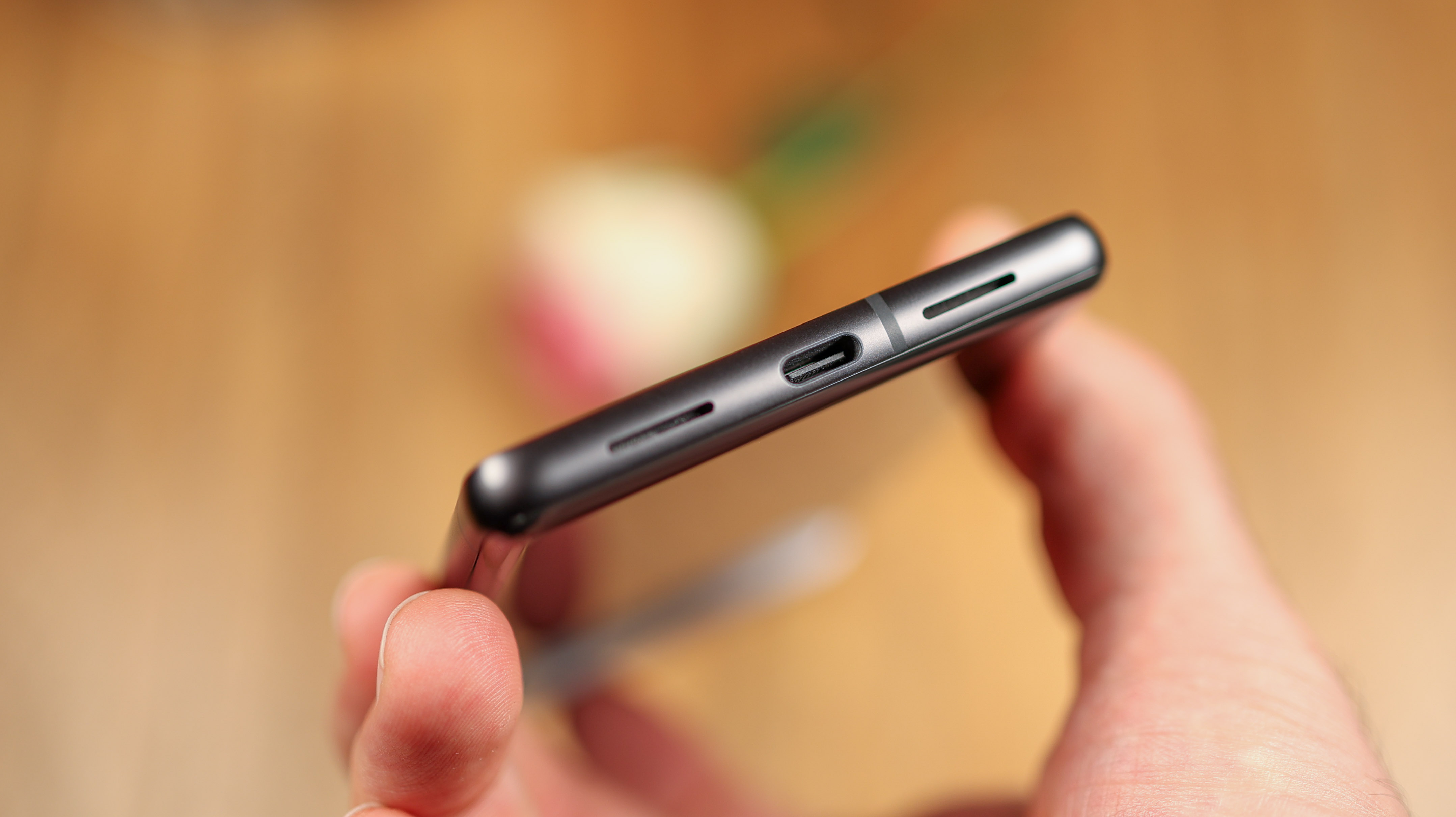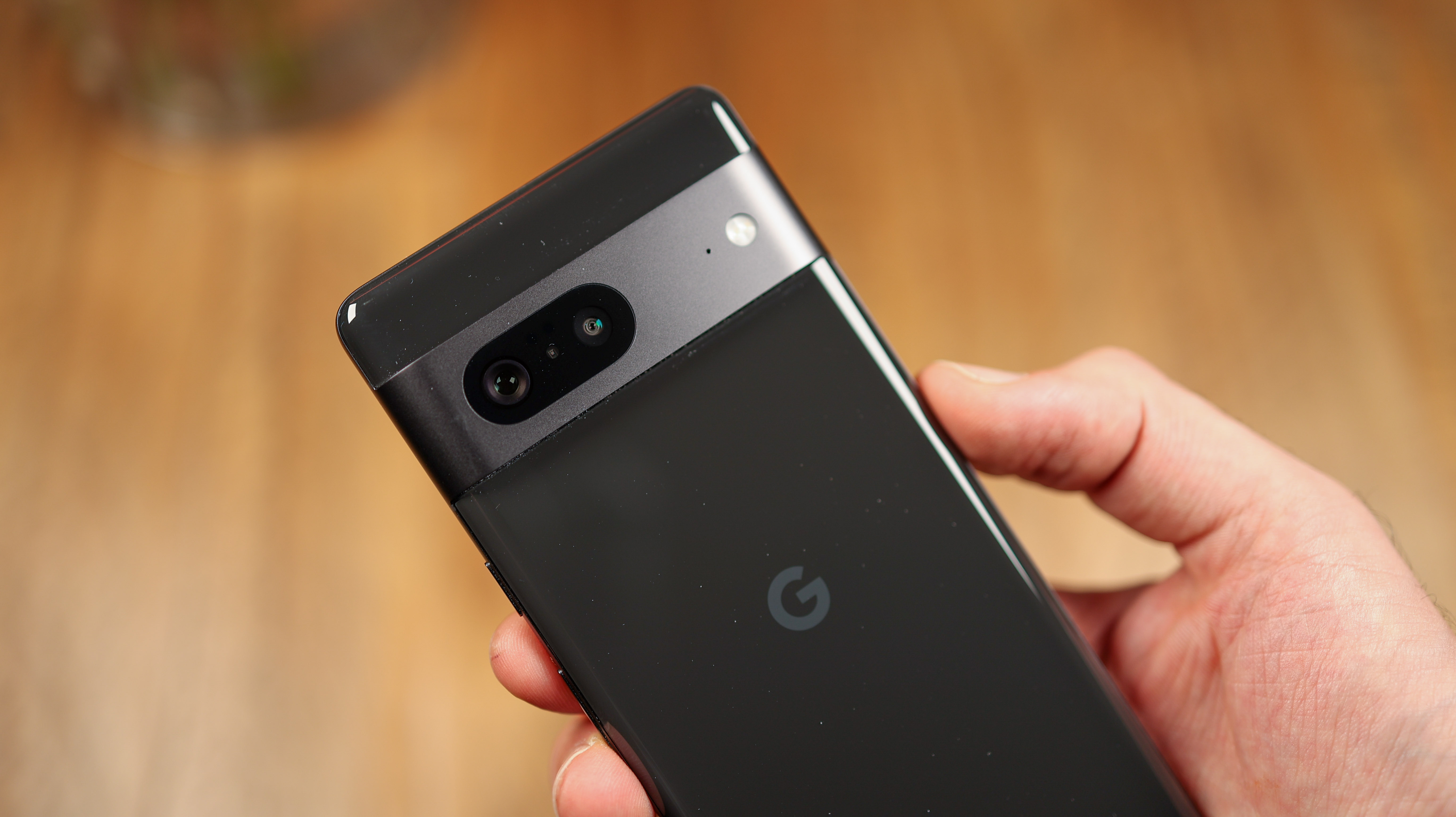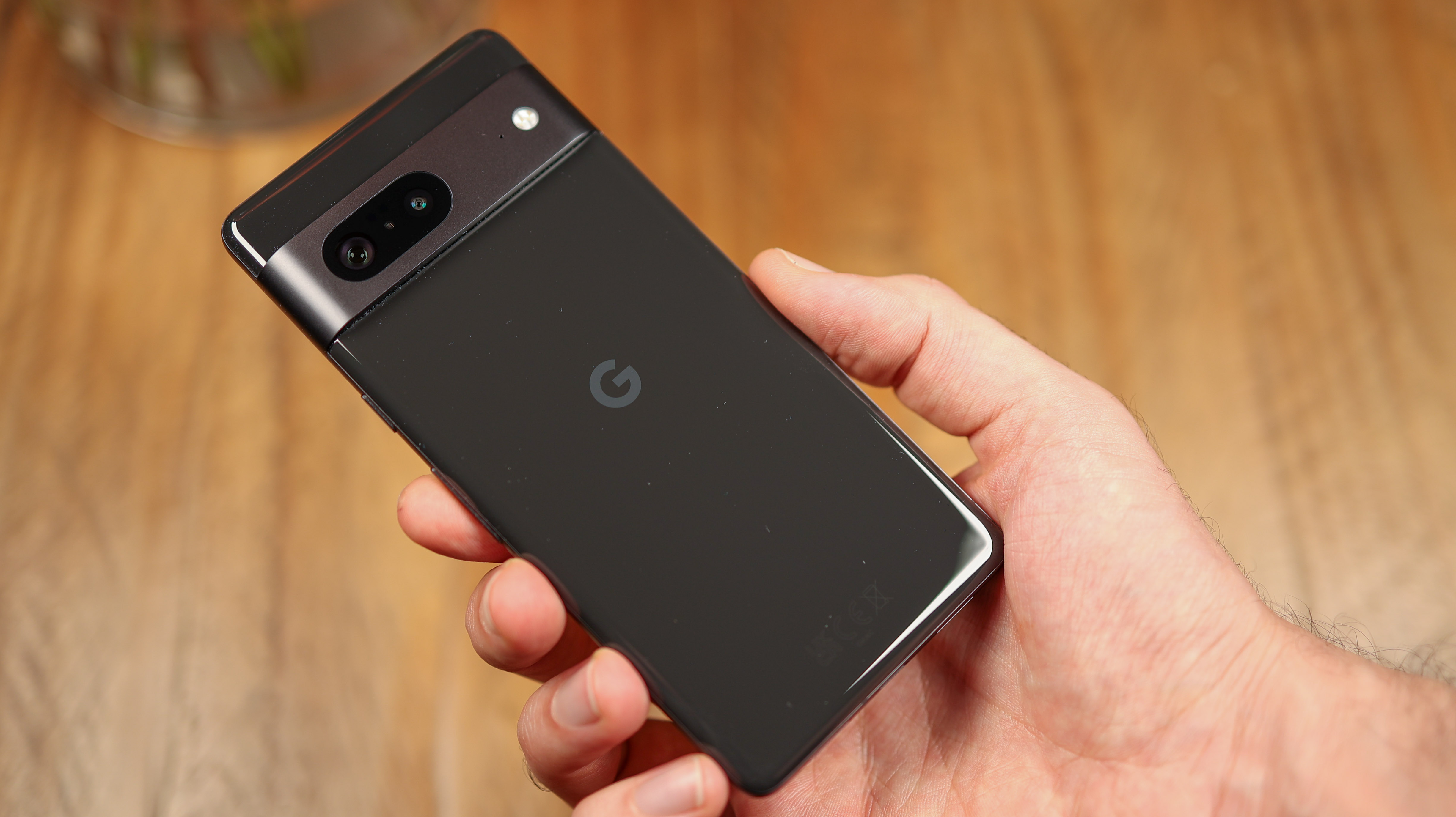Digital Camera World Verdict
The Google Pixel 7 is a safe phone that gives you a great experience despite not costing the earth. It's not necessarily the best at any one thing, but it doesn't drop the ball in any significant way. While the battery is its weakest area, and we would have liked more powerful secondary cameras, after a week with the phone, it's already lasting longer than it was in the first three days, and everything else from the camera to the design, screen, performance, and charging capabilities are on the money for the price.
Pros
- +
Great main camera
- +
Supports wireless charging
- +
More premium design than Pixel 6
- +
IP68 water resistant
Cons
- -
Battery life can be inconsistent
- -
Ultra-wide lacks autofocus
- -
No telephoto camera
- -
No manual photo mode
Why you can trust Digital Camera World
The Google Pixel 7 succeeds the very good Google Pixel 6, refining the formula in key areas for 2022 without costing more (even in the UK, where prices have been on the up lately). Shipping with identical camera hardware, though, would you be better off saving some cash and opting for the 2021 model?
Now that's a good question – and there's no right or wrong answer. And they aren't the only very good Pixel phones you've got to choose from. The Pixel 6a, which we reviewed recently, costs even less while still cramming in great features like water resistance and Google Tensor power inside.
But the Pixel 7 series is a step up in many ways. For starters, the Pixel 7, in particular, is smaller and more elegant than the Pixel 6. It's also powered by a second-generation Tensor G2 chip, and enjoys a higher-resolution selfie camera. But with a smaller battery capacity and identical camera hardware, the jury is out on Google's new affordable flagship – especially considering how much more feature-packed the Pixel 7 Pro is this year.
Google Pixel 7 design and screen





On first glance, the Pixel 6 and Pixel 7 look very similar, but the softer corners, smaller screen, lighter weight of Google's newer phone, not to mention the overall polish all come together to make the 7 our design choice.
On the front of the phone is a 6.3-inch screen – slightly smaller than last year's 6.4 inch Pixel 6, and with its 20:9 aspect ratio, its a similar shape to most Android smartphones launching at the moment.
The Pixel 7 has a Gorilla Glass Victus front and back, and the frame is aluminum, with a smooth but matte feel to it. Just like the Pixel 6 series, the Pixel 7 and 7 Pro sport glossy backs, and the black color we tested is the most fingerprint-loving of the bunch.
You can pick the new Pixel 7 up in three colors, Obsidian (the version pictured in this review), Lemongrass, and Snow. There's nothing out of the ordinary when it comes to buttons and ports – a USB-C port at the base alongside a loudspeaker. The SIM tray sits on the left side, while all the buttons are on the right.
The best camera deals, reviews, product advice, and unmissable photography news, direct to your inbox!
There's no headphone jack, and unlike many phones available now, the Pixel 7 doesn't ship with a case in the box, or a power brick, though you do get a USB-C cable with it as well as a USB-C to USB-A adapter.



With a 6.3-inch screen, Google's Pixel 7 packs a larger display than the iPhone 14 Pro, but smaller than that of the iPhone 14 Pro Max.
It's loaded with high-end highlights like HDR10+ support and a 1400 nits high brightness mode. But it isn't quite a top-tier flagship display with its 90Hz refresh rate – less smooth than 120Hz competition like the cheaper Nothing Phone (1).
The Pixel 7's screen is as sharp as we'd expect it to be given its price, with a 1080 x 2400 resolution, and a pixel density of 416 pixels per inch. In the top center is the new 10MP selfie camera, and the display's flat – once again, putting it in line with many upper midrange Android phones.
Google Pixel 7 camera specs
Just like the Pixel 6, the Pixel 7's camera setup features a primary 50MP camera with a 1/1.31 sensor, featuring 1.2-micron pixels, omnidirectional phase-detection autofocus, laser autofocus, and OIS.
With a 25mm wide-angle matched with Google’s smart camera software, the main camera should be your go-to option for most things. After all, the ultra-wide isn't the autofocusing, macro-capturing snapper on the 7 Pro. Instead, it features a fixed focus lens and 12MP resolution.



There's no telephoto camera on the Pixel 7, though Google promises a near-lossless 2x zoom, just like Apple, cropping into the 50MP sensor, and this works well when the lighting is right.
Shooting modes on the new Pixels bring back old favorites – Astrophotography, Night Sight, Panorama, and Photosphere, as well as standard options like Photo, Video, and Portrait modes. A new mode for the series, you can now enable a cinematic video blur, which creates portrait mode style videos.

Video is captured at 4K resolution, 60fps. While you can shoot RAW photos, there’s no out-of-the-box manual camera capture option, though plenty of third-party apps are available in the Google Play Store that unlock manual photo and video capture, including the Lightroom Mobile app for photos specifically and Filmic Pro for video.
Google Pixel 7 camera review
The Pixel 7's main camera is one of the best, if not the best you'll get at the price. It outperforms pricier competition, like the Sony Xperia 5 IV's primary camera, thanks to its larger sensor, and Google's smart photo processing.
Photos are always brightly exposed, and shadow detail is ample. Traditionalists might prefer shadow exposure to be dialed back slightly, but for most casual users and anyone after a quick picture that's croppable and shareable, the Pixel 7 captures great results.
In addition to very reliable exposure, we're also impressed with how Google's processing juggles shadow detail, white balance, and clarity across the ultra-wide and wide cameras. The primary camera produces ample detail for 12MP photos, but it's a shame Google doesn't unlock 50MP RAW images in the Pixel 7. After all, 48MP RAW photos are one of the highlights of the Apple 14 Pro's new camera system.



Thanks to the new Pixel 7's large sensor, photos from the main camera deliver a much shallower depth of field when compared to those from phones with smaller sensors. The camera is also quick to take a photo and can compensate for a slightly shaky hand well, in bright and dimly lit scenes alike.
While the Pixel 7 Pro gets macro-shooting with the ultra-wide camera, the Pixel 7 doesn't, though can capture subjects as near as 10cm. That's significantly closer than the main camera on the iPhone 14 Pro, and close-up shots look rich.


Another area the Pixel 7 wins out when compared to much of its competition is nighttime photography. Whether shooting Astrophotography shots with the main camera or using either camera to capture a lowlight photo that doesn't look awful – the Pixel 7 is a safe bet.
You can see an example of the Pixel 7's nighttime performance below, compared to a phone around 30 percent more expensive, the Sony Xperia 5 IV. Sony's very traditional processing is extreme, shunning smartphone computational photography and relying on a photographer to switch to manual mode to get the best from it. Meanwhile, the Pixel 7 does everything for you, and its image belies the fact the lights were incredibly low when the photo was taken.

Video quality is also strong for the price, with the Pixel 7's 4K video being quick to adjust for changes in exposure, focusing switfly, and producing footage that looks expensive in bright environments. The ultra-wide doesn't hold up as well as the main camera when the lights drop, but if you stick to the Pixel's primary 50MP sensor, footage is competitive.
We also enjoyed the new shooting modes for their novelty factor, with Cinematic mode working relatively well for faces – but imperfectly for other objects, blurring out the backgrounds during video capture.
We were also able to capture a lowlight handheld light trail with ease thanks to some smart software stabilization, and in video mode, Google's brought back customizable stabilization options: Standard, Locked (when zooming), Active and Cinematic Pans.
Google Pixel 7 additional specs

The Pixel 7 features a small 4,355mAh battery, which surprised us. The Pixel 6 had a 4,600mAh battery, and its screen was only a hair bigger. It's probably unsurprising, therefore, that we had mixed experiences when it came to battery life. The first few days with the phone, it died before the evening with moderate to heavy use. That said, after four days or so, it started making it through a full day. This could come down to Google's battery management software or the Tensor G2 chip's power efficiency. Irrespective – if you need one to two day battery, you'll have to look elsewhere. Full-day battery with standard use, however, shouldn't be an issue once it settles down.
The new Pixel also comes complete with fast charging, which powers it up to 50 percent in 30 minutes, and fully in around an 100 minutes. Given the fact the Pixel 7 doesn't ship with a charger, you might struggle to get a fast charger for it, however, if you look for PD 3.0, that’s the standard the phone uses.
The phones also support wireless and reverse wireless charging, and feature battery-saver and extreme battery-saver modes that can eke out a little extra life from the phone.

After the hoo-ha last year with the Pixel 6's unresponsive fingerprint scanners, we were happy to find the under-display fingerprint scanner of the Pixel 7 to be responsive. The phone also introduces face unlocking to the Pixel series too.
The Pixel 7 starts with 128GB storage and features 8GB RAM, though no SD card. Matched with Google’s Tensor G2 chip, performance was on point, with no slowdown and decent heat management after the initial setup. The phone isn't as powerful as Snapdragon 8 Gen 1 or 8+ Gen 1 alternatives for gaming, but most titles and day-to-day tasks were handled well. That said, long bouts of 5G downloading did result in heat in the first couple of days using the Pixel.
Also of note, the phone runs the latest version of Android, which balances new features with a light, easy-to-navigate interface that’s much less overbearing than UIs from the likes of Huawei and Xiaomi. When you pick up a Pixel, there’s a degree of future-proofing that you can expect, and with excellent app support, the promise of years of OS updates, and five years of security updates.
Google Pixel 7 verdict
The Google Pixel 7 is a very safe bet for photographers who want a balanced phone. Yes, you have to sacrifice a little manual control – no pro mode or access to 50MP RAW photos isn't ideal. But for a point-and-shoot mobile, nothing in the Pixel's price range can best it.
Google's photo processing is tasteful and still ekes out loads of shadow detail, the large sensor does great things with close-up photos, blurring out the background naturally, and lowlight scenes, brightening things up reliably. The phone won't be for photography purists, but it will likely check everyone else's boxes from a camera point of view.
As for the rest of the phone – sure, more consistent battery performance would have been ideal in our week with the phone. The inclusion of wireless charging and IP68 water resistance is both a boon at the price, though, and after our third day with the phone, it always kept us alive from morning to night.
With the Pixel 7 Pro packing superior secondary cameras and an identical primary camera, it goes without saying, the Pixel 7 isn't the best camera phone of 2022. That said, its main camera is probably the best at the phone's price.
Best Google phones
Best phones for video recording
Best phone cases
Best tripods for smartphones
Basil Kronfli is a freelance technology journalist, consultant, and content creator. He trained in graphic design and started his career at Canon Europe before moving into journalism. Basil is also experienced in video production, independently running the YouTube channel TechEdit, and during his time at Future, he worked alongside the Digital Camera World team as a senior video producer.



